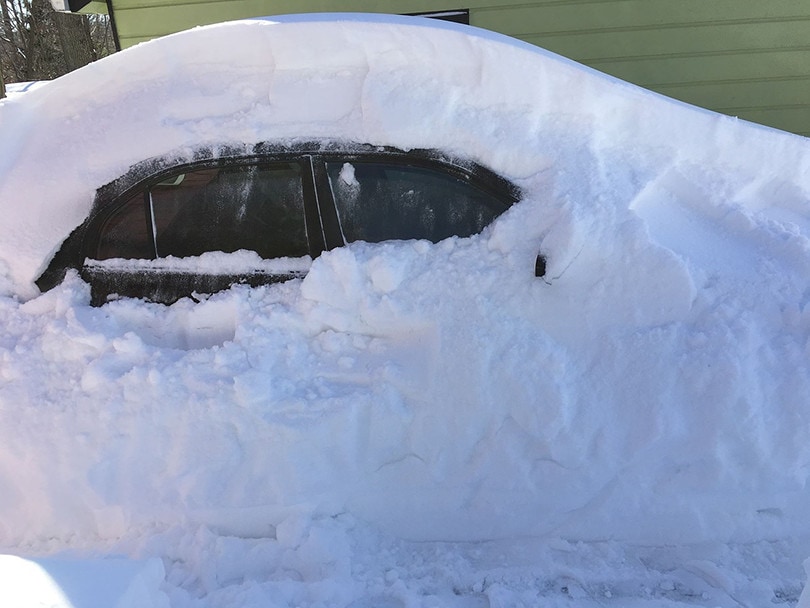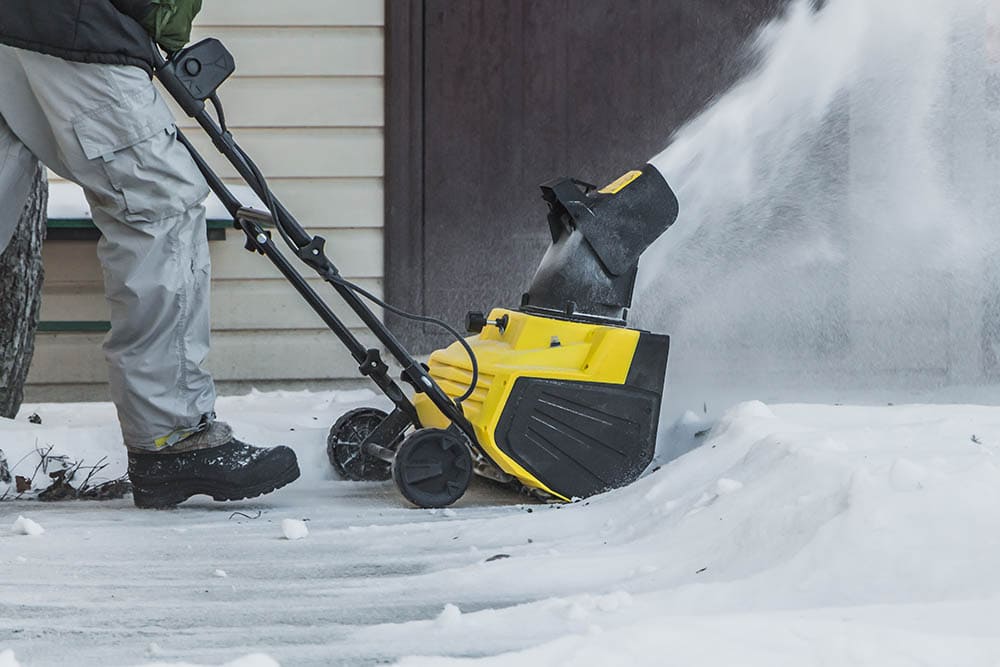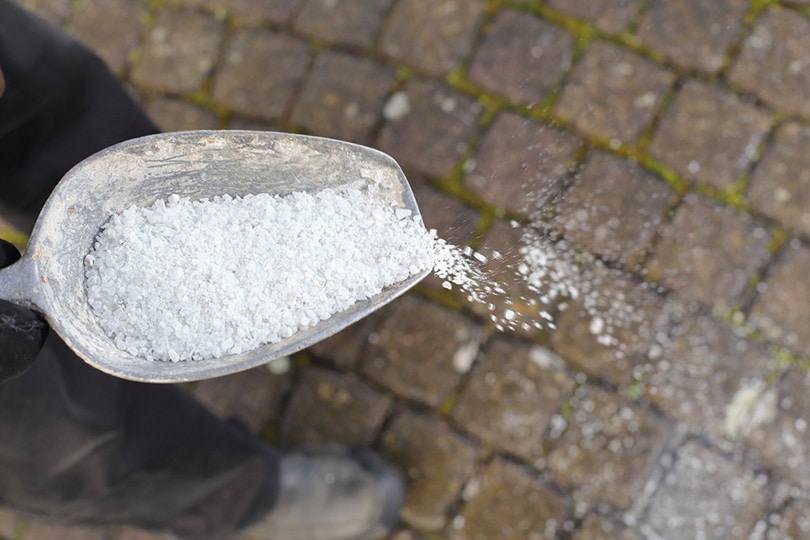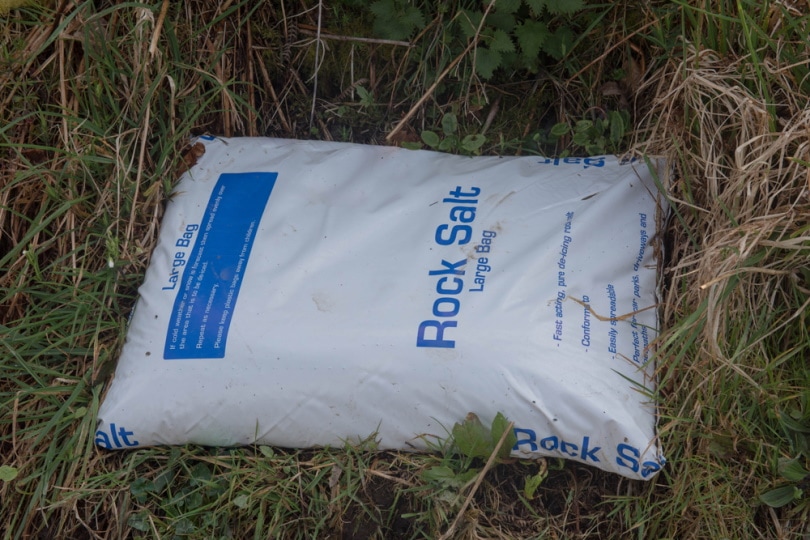When Should I Salt My Driveway? Everything You Need to Know!
-
Pete Ortiz
- Last updated:

Winter comes with several things that require some initial preparation, including proper winter clothes and heating. Another important aspect you should get ready for is the snow and ice on the roads, which are huge hazards that can cause multiple car wrecks annually. To help ensure your driveway is safe for walking and driving, you should salt it just before a heavy snowfall.
Water on the driveway freezes at 32°F, while with salt sprinkled on it, the melting point lowers to 15°F. This starts to melt the ice, which helps keep the driveway safe.
In this article, we will take a deep dive and check when you can salt the driveway and the best way to go about it. We will also provide any necessary information that may help with icy driveways while at it.
Let’s dig in!
Cleaning Up the Driveway
After a snowstorm, the first thing to do is take a snow shovel and work on removing all the snow and ice you can from the driveway. If you had already prepared for the snowstorm by spreading salt all over the driveway, you might have an easier time with less snow and ice to get rid of.
Knowing when and how to apply salt and other de-icer on your driveway will make a big difference during winter, but these may contribute to wear and tear due to the residue left behind.

How Does Sidewalk Salt Work?
Sidewalk salt is essential in reducing the melting point of water to 15°F, which helps in melting it and subsequently preventing slipping accidents and falls. Sodium chloride is the common type of salt used for this purpose, but it is not the only option.
There are various de-icing compounds including chlorides and non-chlorides, all lumped as sidewalk salt. These salts include:
1. Magnesium Chloride
Magnesium chloride works well, especially with tough ice, as it stays on it without rolling away. Magnesium chloride is gentle, especially on concrete driveways, asphalt, and brick driveways. It is also non-toxic and will not affect your pet or the environment.

2. Sodium Chloride
This is also referred to as rock salt and is the most common driveway salt available. It will lower the freezing point up to -20°F. It is also the least expensive salt compound on the list.
However, it has some negative effects on concrete. After the ice melts, the sodium chloride will go in between concrete cracks and refreeze, causing gradual expansion. If pets and people ingest it, it may pose a health hazard.
3. Calcium Chloride
This is more expensive than sodium chloride but will be less harsh on your driveway, especially on concrete. The compound works at as low as -25°F and works faster than sodium chloride.
The compound may have some adverse effects on your lawn and is best directed away from it. It may also cause problems to your pets, including ulcerations in your pet’s mouth if ingested.

4. Calcium Magnesium Acetate
This is the most expensive salt compound on the list and the safest one. The salt has no adverse effects on your driveway and is pet and environmentally friendly.
Best Tips for Spreading Rock Salt
There are a couple of ways that will help you in dealing with ice and snow in your driveway, including:
- Adding Salt Before It Snows– The best time to add it to the driveway is before the snow falls to prevent ice from forming and settling.
- More Shoveling, Less Salting– Although salt impacts snow and ice greatly, it can only do so much on large amounts of ice and snow. To help reduce the amount of salt needed for the job, you must remove the excess snow and ice. You will require a long shovel with a bent handle to avoid any back strain.
- Temperature- When temperatures fall beyond 15°F, most salts stop working. In this case, you may use sand, which, although will not melt the ice, it can help with traction.
- Use a Spreader– Rock salt may be manually spread on the ice and snow, but using a garden spreader is much more efficient. It gives you excellent control over the amount of salt being spread. The more salt you use does not translate to the impact on the ice. You need 4 pounds of salt for every 1,000 square feet.

What About Freezing Rain?
It may seem like common sense to avoid adding salt to the driveway while rain is oncoming. After all, the rain will wash away the salt. However, salt rock has certain properties that require a lot of rainwater to wash it away.
If freezing rain is coming, the best option is to prep the driveway with rock salt to create a barrier between the rain and the driveway.
How to Salt the Driveway
There is a certain way to go about adding rock salt to the driveway.
- The first thing to do is to dress up properly for the job. This will include warm pants, non-slip boots, and a pair of winter gloves.
- Take the shovel and clear all the snow on the driveway or the area getting salted. Do not leave any snow down. Removing the snow allows you to expose the ice and remove it.
- After the area has been cleared, measure the salt as per the instructions on the bag. Using a salt spreader, spread the salt evenly over the whole area.
- After the salt has melted, use the shovel to remove the chunks of ice from the driveway until you see the concrete floor. Add more salt to the driveway in preparation for the next snowfall.
- Place the non-melted chunks of ice away from the driveway to finish melting either in the drainage area or the concrete side, as placing them on the lawn may pose a risk to the plants.

How Sidewalk Salt Affects Lawn and Gardens
When salt settles around the roots of a plant, it creates an environment that prevents the plants from absorbing water. At worst, it can even absorb water from the plants. This is why you see brown coloring in areas affected by a lot of salt on the garden or lawn.
Excess salt can prevent plants from absorbing nutrients instead of soaking them up, leading to chloride toxicity. Being that roots cannot remove excess salt, they will, in turn, pass it to the leaves, which will eventually die off.
However, to minimize damage, do the following:
- Use sand, which will not melt the ice but can help with traction issues
- Stop throwing snow onto the lawn as you shovel it away
- Avoid using too much salt
 Conclusion
Conclusion
Salting your driveway is a simple way to make walking down your driveway in the winter safe. You can choose from several de-icing options, and the safest for both the driveway and the environment is always the best choice.
Apart from using salts, you also have a couple of options, such as spreading around sand to help with traction on the driveway. Whichever methods you choose, ensure you do it efficiently to keep your family and pets safe.
Featured Image Credit: MoneyforCoffee, Pixabay
Contents


